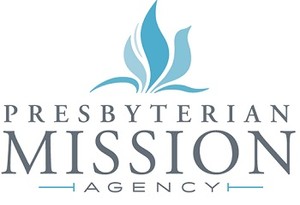The Presbyterian Mission Agency Board audit and finance committees received the Agency’s third-quarter 2015 financial report yesterday. While updated figures for expense and revenue were not significantly different than projections, looming concerns over reserve balances and Agency efficiency occupied much of the conference call.
Year-to-date reporting through Sept. 30, 2015 included the following details:
- Unrestricted giving was up 7.8 percent from projections; though total unrestricted receipts were down 2 percent, largely due to lower than anticipated returns on investments.
- Restricted giving also showed an increase over projections by 2 percent, owing to increased congregational giving (12.4 percent) and special missionary support (449 percent). Still, total restricted fund receipts were down 3.3 percent; also due to lower than anticipated returns on investments and below-projection special offering receipts.
- Combined receipts fell short of year-to-date projections by 3.1 percent, for a $1.5 million shortfall on anticipated receipts of $49.7 million.
- Expenses were held in check, for a reduction in both unrestricted (13 percent) and restricted (10.9 percent) spending. A total reduction in expenses resulted in a net savings of nearly $6 million year-to-date, which is 11.4 percent under budget.
Increased mission giving was attributed to appeals for support of mission personnel and a one-time gift of $1 million, of which $500,000 is allocated for mission support and training in Egypt. Additional large gifts, including a $2.85 million donation from Grace Presbytery, were not reflected in the budget update. PC(USA) controller Denise Hampton said these gifts will be accounted for in the 2016 budget as details of their distribution become available.
Hampton’s report continued with a discussion of the rapidly depleting Presbyterian Mission Program Fund (PMPF), the cash reserve used to balance the Agency’s budget. The fund’s balance is now $1.8 million over the 30 percent reserve requirement of $5.1 million. The fund is expected to go below the reserve balance in 2016, which is consistent with projections provided in previous reports.
Clarification was requested on the allocation of collectible receipts from the Stony Conference Center in New York, estimated between $1.5 and 2.4 million, and from the sale of land and water rights at the Ghost Ranch Conference Center in New Mexico. Hampton explained that although these receivable amounts are accounted as positive balances in the PMPF, no details on the collection of the funds or the closing of the Ghost Ranch contract were immediately available.
Several board members engaged in a discussion of the efficient use of funds by the Presbyterian Mission Agency.
Board member Ken Godshall noted that overhead—administrative, program and personnel support—was a major concern, and wondered whether a previously compared amount of 10 percent “was the right number” for the organization.
“I would like to integrate all this information and have a better understanding of how much money we are devoting to administration and general expenses that might be grouped together in overhead,” he said, “just to make sure we are a lean and mean fighting machine that’s making the most out of the financial support the church is giving us.”
Finance committee chair Chad Herring agreed to take up a discussion of overhead at a later date, asking CFO Earline Williams to comment.
“There’s this perception of what overhead costs are, or what the cost of doing business by ministry area is,” she said. “Often times, it’s misrepresented or exaggerated.”
Noting the difficulty of consistent cost attribution in the organization, Williams said accounting or legal functions that sit inside a ministry area are often allocated as program costs. Those same functions for a ministry area, when rested in the legal or accounting department, are allocated as overhead.
“Few things can be more destructive [to an organization] than this kind of debate about common shared services and overhead,” said board member Eileen Lindner, who previously served for 30 years as an administrator with the National Council of Churches. “Not only [should we decide] how we calculate it, but having a shared understanding and a shared interpretive way to talk about it. Having figures like 35 or 45 percent is an enormous disincentive to donors and it’s very difficult to cull that back, even if you get a better understanding later.”
The next scheduled meeting of the Presbyterian Mission Agency Board is Feb. 3-5, 2016 in Louisville.

